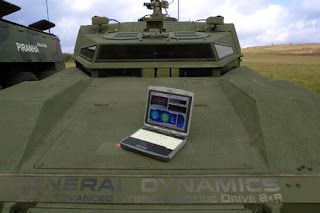Section 5: Trends and Issues in Various Settings
Chapter 18 discusses instructional design in business and industry. Give an example of rapid prototyping and discuss how this could be used in education.
In doing research on rapid prototyping, most of the resources I found on the Internet had to do with rapid prototyping in manufacturing, particularly in creating CAD/CAM type prototypes using “printers” that create prototypes out of wax, paper, or plastic.
I found one site which specifically addressed rapid prototyping in instructional design at http://www-personal.umich.edu/~jmargeru/prototyping/#rapid_prototyping. The web page author references a definition by Wilson, Jonassen, and Cole: Rapid prototyping. In a design process, early development of a small-scale prototype used to test out certain key features of the design. Most useful for large-scale or projects.
This web site also contains several relevant quotes from a journal article. One in particular addresses differences between rapid prototyping and traditional instructional systems design: "many traditional models emphasize early constraining of design decisions, while rapid prototyping follows the pragmatic design principle of minimum commitment, that at each stage in synthesizing a design no commitment is made beyond what is absolutely necessary to solve the problem at hand." (p. 37)
Tripp, S. D., & Bichelmeyer, B. (1990). Rapid protoyping: An alternative instructional design strategy. Educational Technology, Research and Development, 38(1), 31-44.
Building paper airplanes is often used as an analogy for rapid prototyping. The web site mentioned above references an example of developing a software program to tutor ESL students in English grammar. So how can we as educators use rapid prototyping? It's not as difficult as it sounds. One example would be developing a PowerPoint presentation, which can start as a barebones presentation. Both the design and content can then be modified and expanded as it is continuously used. Another example would be a project-based small group activity. A teacher can start with a very basic design for the group-based project, and then modify the materials and/or activities each time until the project design is refined into a more finished product.
Here is a good diagram illustrating rapid prototyping process in Instructional Design from http://www.ediscover.org/InstrucDesign.html.
Chapter 19 discusses instructional design opportunities in military education and training environments. I had the opportunity to work two summers in Orlando on a faculty fellowship in the advanced distributed learning lab (ADL) discussed in the book and saw first hand some of the constraints placed on some of the tools that could be used for learning. Pretend you are hired as a consultant for the military. They want to use technology in its training, but electronic access is not always available. Using the Full Spectrum diagram, what alternatives could you suggest for a successful program?
Photo: Itronix (http://www.ediscover.org/InstrucDesign.html)
The Marine Corps solution (on p. 194 of our textbook) could be modified by using a similar setup with rugged laptops loaded with standalone software that could be modified by the instructor, and infrared or bluetooth connectivity between laptops so that instructor could transfer modified documents to users. This could be implemented simply using word processing and/or CAD software and Adobe Acrobat.
Without any electronic access, the trainers could use a paper-based 3-ring system. This could be similar to notebooks we used for engineering specifications at a company where I used to work. When MasterSpec issued quarterly updates, they shipped only the pages that were changed or added, along with specific instructions on where and how to delete pages, add pages, or substitute pages. Trainers could use a similar system with individual pieces of equipment or procedures organized into sections that could be easily removed or replaced as needed.
Chapter 21 looks at radical educational change in P-12 settings. I visited the Chugach School District in Alaska and know Richard DeLorenzo very well. I can assure you that this change can occur in our schools. Review the Step-Up-To-Excellence methodology and the GSTE. Outline a staff development activity that will introduce both methodologies to your colleagues.
I am very familiar with Decatur MSD in Indianapolis which is highlighted in the GSTE design because my nieces attended there, and it has a very good reputation in the area.
In setting up a staff development activity to introduce GSTE and SUTE, I would first introduce some of these success stories. It would be very effective is maybe a video interview could be obtained highlighting the results attained through these programs.
I would try to use something visual to outline the GSTE, such as a PowerPoint and/or concept mapping the GSTE. When it comes to discussing the core values I would maybe give a few examples, but not an exhaustive list. Instead, after introducing the other components, such as revised discrete events and continuous events, I would have participants come up with their own core value lists in small groups.
After introducing the five steps of SUTE, I would have participants brainstorm of possible cluster and site improvement teams which would work for their district or campus. I would also get their ideas on what types of things OLN and/or on-track seminars should address
- What are the different names used for faculty development?
- What division is it under?
- What services does it offer?
- How often are programs given and what specifically are they?
Ball State University – Muncie, Indiana
Professional Development
Teaching, Assessment, Scholarship
Spring Workshops
IUPUI – Indiana University/Purdue University at Indianapolis, Indiana
Faculty Advancement
Purdue University – W. Lafayette, Indiana
Professional Development




1 Comments:
Great resources on rapid prototyping to include the video. I can tell you've researched this topic a great deal on your own. Would like to hear how you see the application of what you read into the education field.
Good post!
Post a Comment
Subscribe to Post Comments [Atom]
<< Home